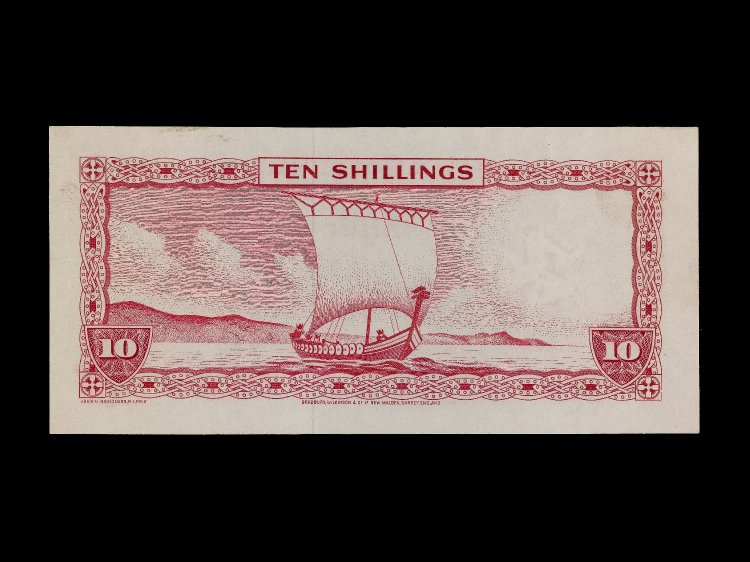
March 31, 2016, by Stephen McKibbin
Interpreting the Viking Age
This blog post was written by Judith Jesch, Professor of Viking Studies in the School of English.
The Isle of Man, in the Irish Sea between Britain and Ireland, was conquered by Vikings in the ninth century, and it was ruled by Viking and Norse kings until the thirteenth century. It is now a self-governing Crown dependency, but not a part of the United Kingdom, and its island parliament still meets at Tynwald, the ancient Viking assembly site. Because of its location, Man’s cultural heritage is a complex mixture of Celtic and Norse, and both are regularly celebrated, as in the ten-shilling note pictured above, with its Viking ship motif but also Celtic-style crosses in the corners. This banknote was first issued in 1961 when Lieutenant-Governor Garvey was working to improve the Manx economy by allowing the island to set its own domestic tax rates and giving control over the issue of currency to the Manx government, thus setting up the current prosperous situation of the island. The banknote suggests that Garvey took at least some of his inspiration from those great taxers and traders the Vikings!
If you look carefully, you will see that the Viking ship has four figures in it, each wearing a horned helmet. Now even back in 1961 it was hardly news that not only were helmets rare in the Viking Age but that they certainly never had horns on them. Yet this is a motif that continues to be used to represent the Vikings even today, as any quick internet search will show. More than anything else, the persistence of the horned helmet underlines the gap there often is between public understanding of the Viking Age, and academic research into the period and its culture. For over a decade now, the three Midlands universities of Nottingham, Birmingham and Leicester have worked to bridge this gap by organising, on a rotating basis, the Midlands Viking Symposium, every year towards the end of April. Since its founding in 2005 by Christina Lee, the Symposium has brought together students, academics, heritage professionals and amateur enthusiasts to share ideas, experiences and knowledge about the Vikings and their Age. Over the years, symposium themes have included ‘Connecting Islands’, ‘Viking Masculinities’, ‘Viking Ways: Bones to Berserks’, ‘On the Trail of the Vikings: from Snails to Tales’ and ‘Traders, Raiders, Drinkers and Thinkers’. In 2011, the Symposium took a holiday and went to Dublin, eventually spawning a great big book, The Vikings in Ireland and Beyond, ed. Howard Clarke and Ruth Johnson (2015).
This year, the Symposium has been organised by Judith Jesch and will take place in Nottingham on 23 April, promising a feast of talks giving guidance on how to interpret the Viking Age. You can find out how crabs can save the Oseberg ship, how the latest scientific technologies can illuminate the movements of people in the Viking Age, what place-names and archaeological discoveries can tell us about the period, and how the mythologising of the Viking Age began already in medieval Iceland. There will also be a resident craftsman showing how he interprets Viking Age archaeology through the replicas he makes. For more information about the Symposium, please visit our event listing (click on the link), where you can download a flier, and find out how to register (deadline 19 April).
No comments yet, fill out a comment to be the first

Leave a Reply